by Beth Cowie, “Out and About”
July 2025
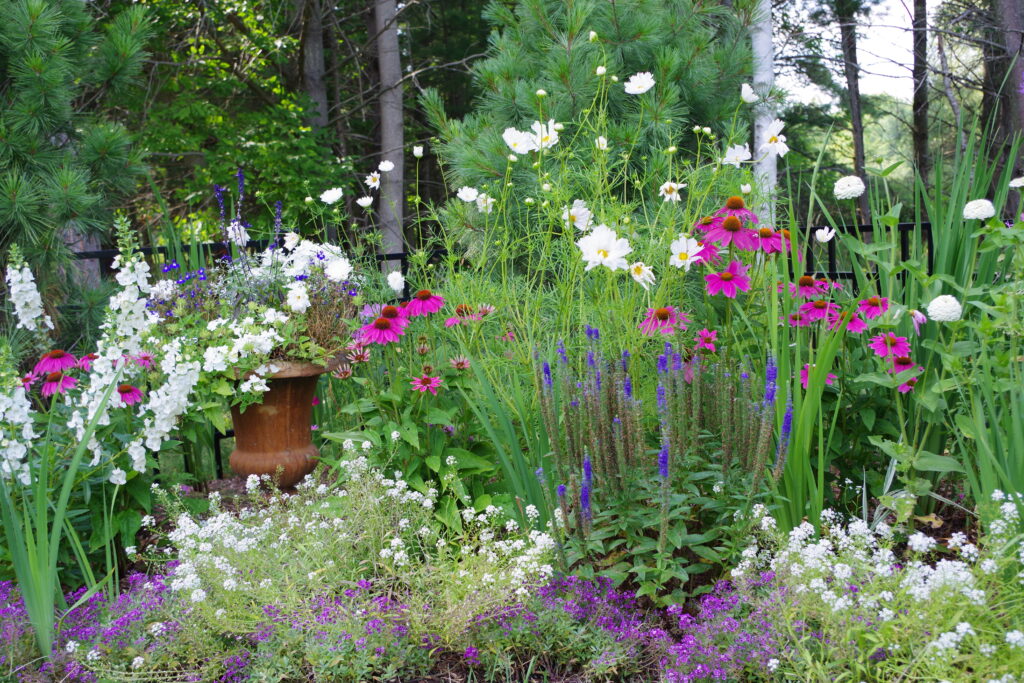
In 2019 my husband and I purchased a piece of property in Northern Michigan and engaged a contractor to build what we thought at the time would be our summer house. We had kept our design for the house simple and small – we originally envisioned just being in Charlevoix for a few months each year to escape the heat and humidity of DC. Several months into the construction, Covid changed everything.
Our house was already framed up and closed in when the pandemic happened. We could adjust some details, but we weren’t going to be making any major changes. Instead, I decided to focus on the garden. The house has a small footprint, so the outdoor areas are an important extension of our living space.
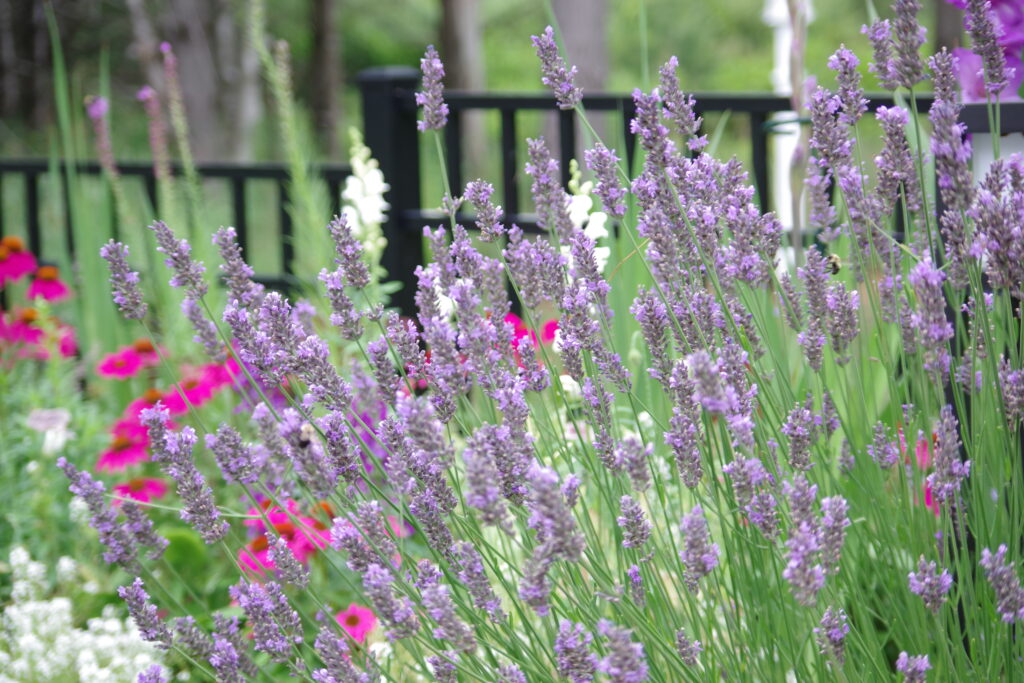
I looked for garden inspiration in books and in gardens that I visited. Since we were in the middle of the pandemic (and I had some extra time on my hands), I also took the Foundations of Gardening Course through Michigan State University and became a certified Master Gardener.
What I hoped to create was a cottage-style garden with a variety of pollinator-friendly perennials. Despite being a rather formal garden, I found the Bishop’s Garden to be an excellent model – particularly the Lower Perennial “Blue” Border. The blue, purple, and white palette, along with the layered heights and plant structure has always been one of my favorite parts of the Cathedral Grounds. I was also inspired to group plants in warm hues as they are in the Bishop’s Garden’s Upper Perennial Border. Living within walking distance of the Bishop’s Garden was a blessing during the early part of the pandemic, and I visited almost daily.
My garden will always be a work in progress. I started with the rear yard – which was defined by a low fence to contain the dog. This is the more “formal” part of my landscape – and the only part with a turf lawn. A perennial border runs along the fence, and over the past few years, I have added plants on both sides in order to visually minimize the fence. This area also contains my greenhouse (where I start all of my vegetables and flowering annuals from seed), as well as several raised beds with herbs and vegetables.
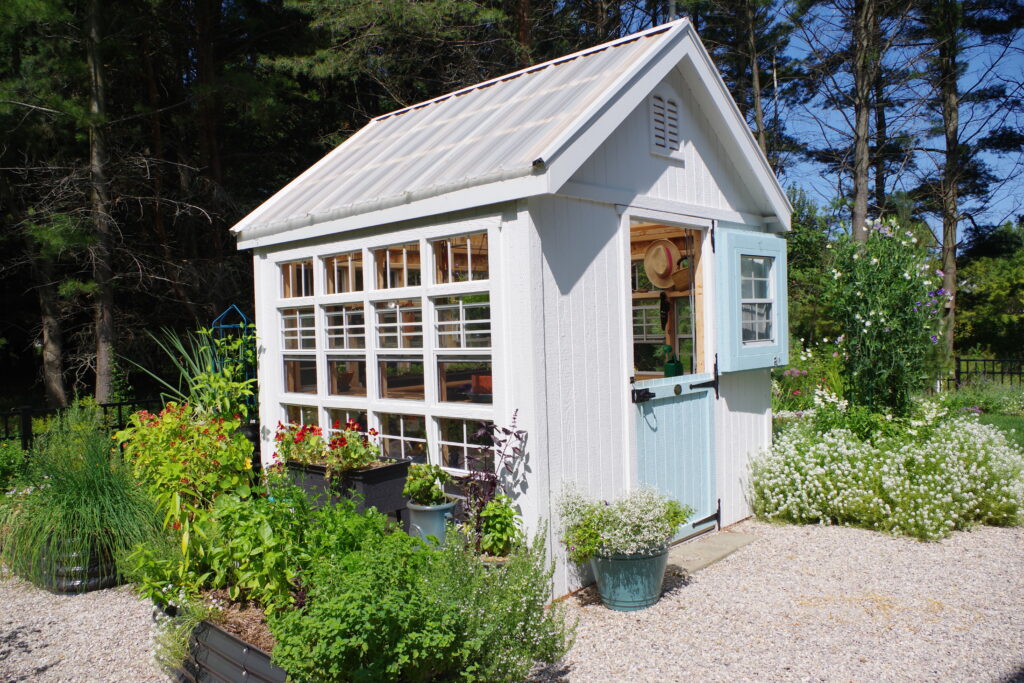
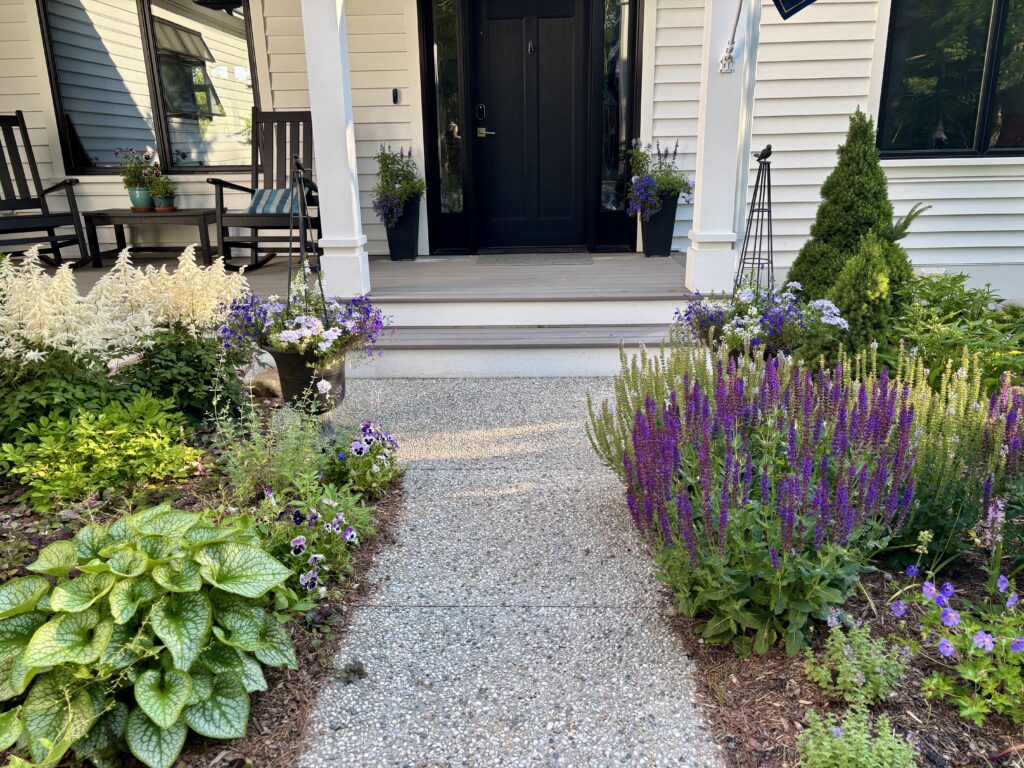
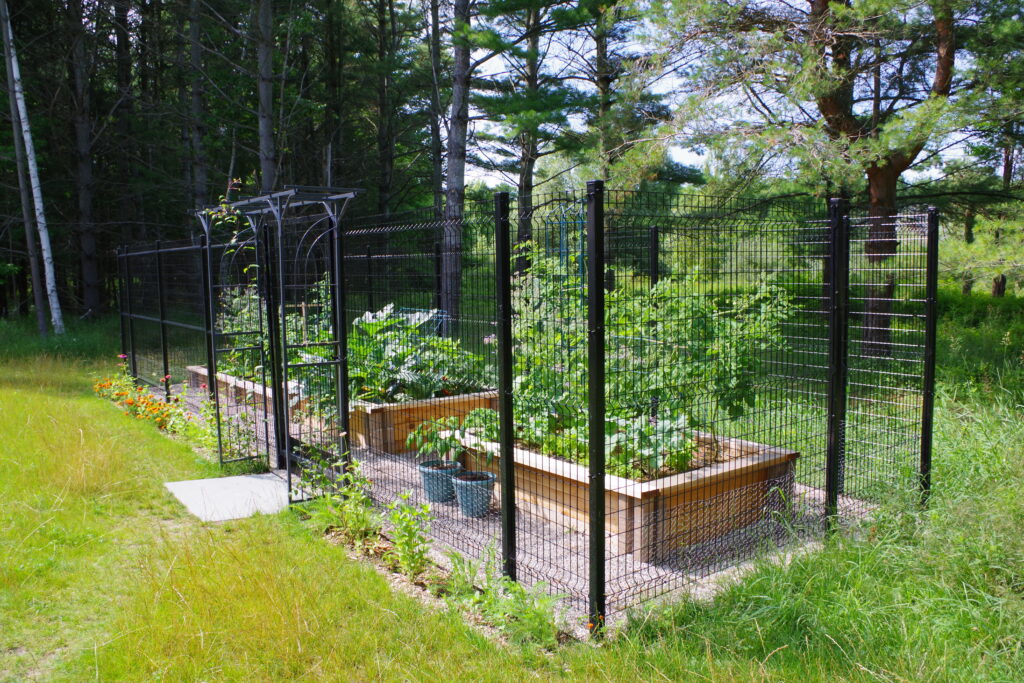
The front of the house is surrounded by more perennial beds with a variety of deer-resistant plants and shrubs. Deer pressure is intense, so “deer-resistant” is not a hard and fast term. Behind the rear yard is a vegetable/fruit garden with a 7 foot fence (which does make it deer-proof), and a “cutting garden” filled with annual flowers. Beyond that is our meadow – with native wildflowers, red osier dogwood, and prairie grass.
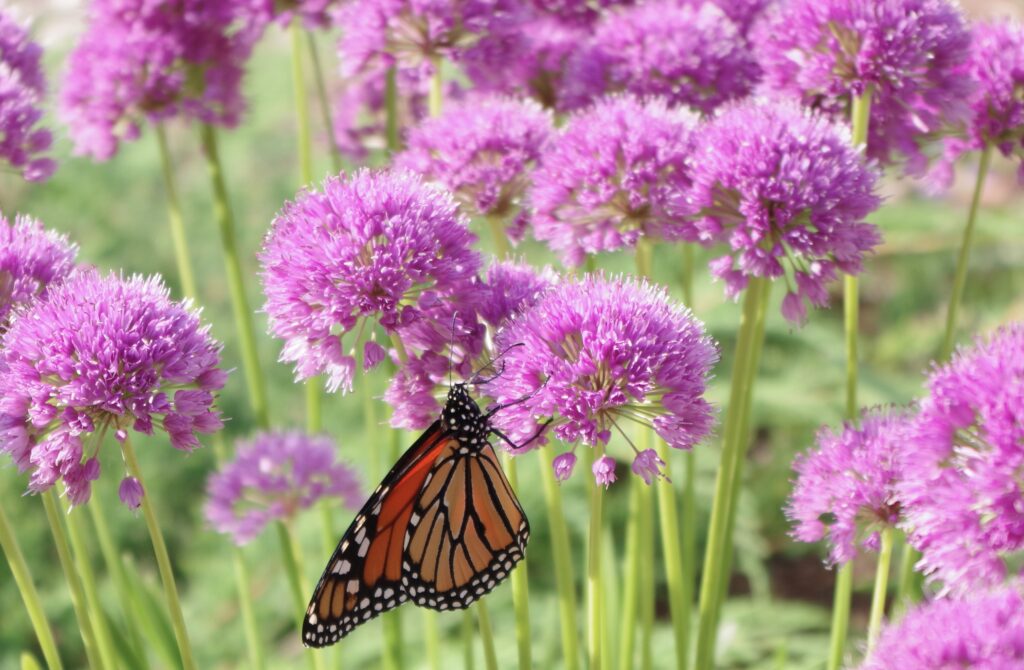
Gardens take years (or lifetimes) to mature. I’m impatient, so I kept adding plants to the borders (and maybe just making the borders a bit bigger)…. Plants themselves became the mulch. If you don’t have areas of open ground in a planting bed, then there is no space for weeds. An opening in the border was just an opportunity to put in a new plant. There is repetition in the borders, but having a variety of perennial plants allows for a variation in the bloom times, and variation of heights and shapes. It also means that when a pest (insect, disease, or mammal) attacks, the entire border isn’t affected.
All of this may sound like a lot to maintain, but doing things in the garden almost never feels like “work”. Having minimal turf grass means that we don’t spend any real time mowing (it takes less than 10 minutes with a push mower to cut the rear yard). We don’t apply pesticides and native plants don’t require any fertilizer. And at the end of the day, we have a lovely space to relax, or entertain, or just sit and listen to the birds enjoying the fruit on the serviceberry trees.
Beth Cowie is a former All Hallows Guild Board Member and has recently retired from her career as an architect in Washington, DC. Currently she resides in Charlevoix, Michigan, where she volunteers through MSU Extension as an Advanced Master Gardener and is President of the Northern Michigan Master Gardener Association.


